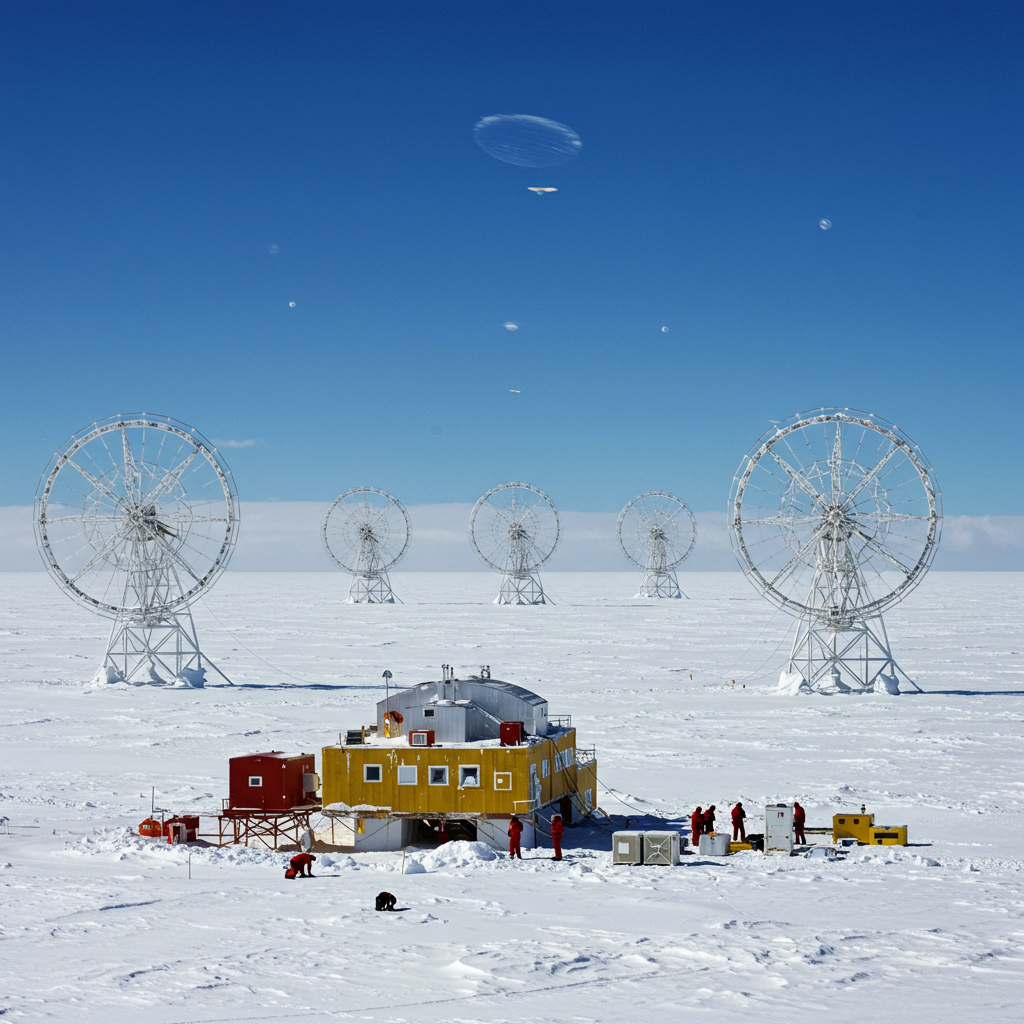Antarctic Science Detects Baffling Signals
Scientists working with a cosmic particle detector in Antarctica have reported a series of unusual signals emanating from the vast ice sheet. These mysterious radio pulses defy current understanding in particle physics, potentially hinting at the existence of previously unknown particles or interactions.
An international research group, including scientists from Pennsylvania State University, published their findings in the journal Physical Review Letters, detailing the anomalous detections made by the Antarctic Impulsive Transient Antenna (ANITA) experiment.
The ANITA Experiment: Listening for Cosmic Particles
The ANITA experiment utilizes instruments flown on high-altitude balloons above Antarctica. Its primary mission is to detect faint radio waves produced when high-energy cosmic particles, particularly elusive neutrinos, interact with the dense Antarctic ice. Think of the ice itself as a massive natural detector, and ANITA as the airborne antenna listening for the subtle radio ‘pings’ these interactions create. By capturing these signals, researchers aim to gain insights into distant cosmic events and help solve long-standing mysteries about the origin of high-energy cosmic rays.
Signals From Below: A Physics Paradox
Normally, when cosmic particles interact high in the atmosphere or near the ice surface, the resulting radio signals would either travel downwards or reflect off the ice. However, the signals detected by ANITA were different – they appeared to be coming from below the horizon, originating from within or beneath the ice itself.
This orientation presents a significant paradox for existing physics models. Particles interacting deep within the ice are expected to be absorbed or produce signals that wouldn’t be detectable from ANITA’s high altitude. The fact that these signals reached the detector suggests they behaved in a way that contradicts conventional understanding of particle behavior in dense ice.
What Makes These Pulses So Mysterious?
Further deepening the mystery is the specific angle at which these radio waves were detected. Researchers noted the signals arrived at “really steep angles, like 30 degrees below the surface of the ice.” According to current particle physics, known particles like neutrinos interacting within the Earth or ice shouldn’t produce detectable radio emissions from such depths or at these extreme angles. Particles traveling through thick layers of ice and rock would typically be absorbed or deflected, rendering any associated radio waves undetectable from above.
Scientists initially considered the possibility that these signals were caused by neutrinos, subatomic particles notorious for rarely interacting with matter. Neutrinos can travel immense distances and are a key target for experiments like ANITA. However, after analyzing the unique characteristics and steep angles of the detected pulses, the team concluded that the signals “most likely not representing neutrinos,” according to Stephanie Wissel, an associate professor at Penn State.
The inability to explain these specific signals using the expected behavior of known particles, including neutrinos, leaves physicists baffled and points towards a truly anomalous phenomenon.
Implications for Particle Physics
The unexplained detection from Antarctica is highly significant because it cannot be accounted for by the established Standard Model of particle physics. The anomalous angles and origin below the ice strongly suggest that these signals could be the footprint of a new type of particle or a fundamental interaction not previously known to science.
While scientists are still working to rule out all conventional explanations, the mystery has sparked speculation about exotic possibilities. Some theories, though highly speculative, have even pointed towards dark matter as a potential cause, highlighting the extraordinary nature of this unexplained phenomenon.
This Antarctic discovery joins a growing list of cosmic radio mysteries currently puzzling astronomers, including phenomena like Fast Radio Bursts (FRBs) and unusual repeating pulses from stellar systems, though the ANITA signals present a unique puzzle rooted in particle interactions within Earth’s ice.
The Search for Answers Continues
The origin of these mysterious radio pulses detected by the ANITA experiment remains unknown. This surprising finding from the cold depths of the Antarctic ice sheet challenges existing theories and opens up exciting possibilities for discovering new physics beyond the Standard Model. Further research and analysis will be crucial in determining the true nature of these baffling signals.




